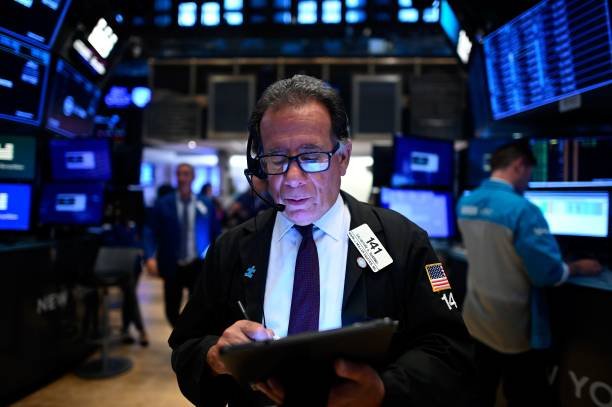The first quarter of 2025 proved to be a challenging period for U.S. stock markets. The S&P 500 fell more than 4.5%, while the Nasdaq experienced a dramatic 10.4% decline, wiping out more than half of last year’s gains. The Dow Jones Industrial Average also slipped 1.3%, marking its first back-to-back monthly losses since October 2023. This downturn coincided with growing anticipation of President Donald Trump’s new tariff policies, which have added to the uncertainty surrounding trade policy and investor sentiment.
The S&P briefly entered correction territory on Monday, falling 10% from its most recent high before recovering slightly. The declines contributed to the index’s worst monthly drop since late 2022 and ended its streak of five consecutive winning quarters. Meanwhile, the “magnificent 7” tech companies—Amazon, Apple, Microsoft, Alphabet, Nvidia, Tesla, and Meta—collectively lost over $2 trillion in market value during the first three months of the year.
While U.S. markets struggled, international stocks surged. The Euro Stoxx 600 saw a 5% gain, its best quarter against the S&P 500 in nearly a decade, and the MSCI China index rose 16%, bolstered by local economic stimulus and enthusiasm for AI startups. In the U.K., the FTSE 100 also performed well, climbing more than 5% during the quarter. On the other hand, Japan’s stock market faced challenges, with its flagship index dropping 10% amid concerns about manufacturing and exports.
President Trump’s tariffs, set to be announced on April 2, aim to address trade imbalances but have created widespread uncertainty. Business leaders have expressed frustration over the difficulty of planning in such a volatile environment. Some analysts remain optimistic, suggesting that negotiations to soften the tariffs could begin once the policies are unveiled, potentially redirecting market focus to more positive aspects of the Trump administration’s economic agenda.
 Traders work during the opening bell at the New York Stock Exchange (NYSE) on October 2, 2019 at Wall Street in New York City. - US stocks continued to fall at the markets' open on Wednesday, as disappointing employment data added to the gloom from a dismal manufacturing report on Tuesday.Tuesday's losses wiped out gains won in the third quarter by the benchmark Dow and S&P 500, and the downward slide continued. (Photo by Johannes EISELE / AFP) (Photo by JOHANNES EISELE/AFP via Getty Images)
Traders work during the opening bell at the New York Stock Exchange (NYSE) on October 2, 2019 at Wall Street in New York City. - US stocks continued to fall at the markets' open on Wednesday, as disappointing employment data added to the gloom from a dismal manufacturing report on Tuesday.Tuesday's losses wiped out gains won in the third quarter by the benchmark Dow and S&P 500, and the downward slide continued. (Photo by Johannes EISELE / AFP) (Photo by JOHANNES EISELE/AFP via Getty Images) 